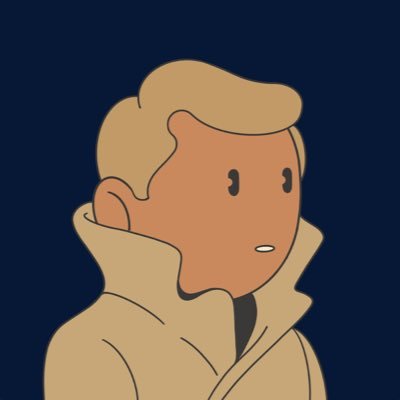About Esteban Amaro

Visual artist and photographer blurring the limits of mediums like photography, sculpture, video, installation and AI; somewhere in between minimalism, the universal questions and the environment.
Redefining concepts like time, space, and immensity, conveying a profound connection and interrelation with the universe and with the environment. Rooted in experimentation, contemplation, and ancestral wisdom, Amaro crafts a reality that reinterprets our understanding of the world; a blend of natural and supernatural elements, shifts perception and invites exploration of the unknown.
An interview with Esteban Amaro led by Carlo Borloni


Your new collection, "In The Past Hides The Future", explores themes related to time and human origins. How did you approach these topics, and how does the archaeology of the unknown influence your artistic practice?
In this new series I wanted to go further into these subjects that I was already working on: time, our connection to the universe, to the environment and to the unknown. I've always felt like there was so much beneath the surface, and whenever we can unlock these hidden truths, then the paths will start to align. Rediscovering what's lost and realizing how maybe the future lays in the past was a primordial subject when developing this new series; time and our origins are yet to be rediscovered, and this is what these images are doing, bringing this unknown archaeology back into our world.


You work across various mediums such as photography, sculpture, video, installation, and AI. How do you integrate these disciplines into a coherent narrative, and what challenges do you encounter when transitioning between mediums?
For me, it's all about the story. I see mediums as different highways to navigate through these different concepts and feelings. To maintain a coherent narrative, I work and experiment within the subjects that are deeply rooted in my work, that's the substance.
My background comes from photography; still, in those early days I was looking to portray something beyond; time, immensity, the unknown, and these ephemeral subjects that you cannot see, so back then I was already pushing the limits of the medium, and at the same time I was having these visions of new sculptural installations that were impossible to build, at least in this world, or at this time, and that's when I looked into AI, so for me working on different disciplines, it's natural, it's an evolution, just need to maintain the focus.


The concept of the ‘impossible becoming possible' is central to your latest work. How do you see this idea manifesting within your use of natural, ancestral, and cosmic elements?
Is this some kind of cosmic egg we are seeing? Is it the seed of a new being? Is it our souls? Is this stardust traveling through the sand? To tell you the truth, I'm not quite sure what we are seeing, but what I'm sure is that somehow these impossible concepts are manifesting. Sometimes I feel like I'm a conduit, channeling these cosmic and ancestral forces into this reality.
I want people to question what's already established, Who are our ancestors? Where do we come from? I want to embed this kind of universal question into my work, as it is already embedded in our consciences.


Your collection evokes a sense of timelessness, blending the past, present, and future. How do you perceive the relationship between these temporal dimensions in your work, and what message do you wish to convey about this connection?
I like to think everyone can live in their own time, or outside of time, without being bound by the human conception of it. That's how I live and how I create my work, that's why these pieces feel like they could be from the past or the future. Time can bend itself, you can slow it down, and I want people to feel that way. Also, start asking questions, what's the bigger history, the bigger timeline? Where are we going from here? Is the present all that we have? Maybe time isn't what we are taught.


The use of AI to create images in "In The Past Hides The Future" adds a layer of innovation to the theme of lost knowledge. How do you see AI as a tool for exploring the unknown, and how does it complement your vision of blending the natural and supernatural?
That is a great question. I consider these images some kind of photograms lost in time, lost in the sand, and through the use of AI, these images are now coming back to us, they already existed in a network of information beyond our understanding, in the cosmic hidden web of knowledge. It makes me sometimes wonder, does these new AI technologies are able to access realms that we cannot?


Your work often invites viewers to question their perception of reality and to explore the unknown. What role does contemplation and experimentation play in your creative process, and how do these elements shape the final pieces?
I believe these go hand in hand. You must contemplate and experiment to find something meaningful, you must go into the profound corners of your soul, of humanity, and of the universe. Once you are on that path, you become limitless. The same goes with the creative process. I like to experiment with each idea and let it take its own form, sometimes I can see the path, others the path it's presented to me. Sometimes I wonder if it's even right to experiment with these subjects and even get to question what is real. That's when I know I'm on to something special and look for a way to bring that into the final piece.


You've mentioned that your work draws upon ancestral wisdom and universal elements. How do these influences shape your artistic perspective, particularly in relation to your environmental concerns and your connection to the cosmos?
Part of my artistic journey begins with the feeling that I have something to bring from the universe and back into this world. This knowledge isn't mine, it's drawn from our ancestral origins. There are hidden messages on the land and in the skies, and we can access them. Our ancestors knew we came from the somewhere higher and our place in the universe, they knew we are all one—one with the environment, one with the cosmos, and within ourselves, we become one and infinite at the same time.
I like to read old books and some from our times, to find knowledge and wisdom that already exists, learning about ancient cultures like the Sumerian and Egyptian. I also visit these ancestral places to experience them in real life. I was once in Puma Punku and Tiwanaku in Bolivia, where you can find places like The Buried Temple and The Gateway Of The Sun. There, you can feel the magnetism in the air, and you can see these giant rocks cut to perfection used to build geometric temples and monoliths thousands of years ago. This really makes you wonder, and think about our connection to something bigger; to the universe.


The monolithic structures in your collection evoke both human and extraterrestrial origins. How do you balance these two influences in your work, and what do they represent in your exploration of creation and cosmic energy?
The thing is, we don't know who created these structures; they might be humans from another time or extraterrestrial beings, or they might be both. Sometimes I feel like we are the aliens in this world; we are all aliens in someone else's eyes; we all come from the same cosmic origins, whether it was from a huge cosmic explosion like the big bang or stellar dust remaining from stars collapsing and galaxies colliding, we just don't know. I try to balance this into my work by making them feel somehow familiar yet alien, something that we could have built but maybe not, like the pyramids. I think there is something interesting to keep diving deeper into the work.


Your art has been exhibited across diverse geographical locations and even in the Metaverse. How does the experience of showcasing your work in both physical and virtual spaces impact your approach to creation and audience engagement?
I'm grateful for working with different galleries and curators from across the globe, it has been a great way to learn and build. Somehow, my work navigates well between the physical and the digital worlds, so seeing them in both worlds and getting feedback from what people think and feel about it has reassured my conviction in it. The work seems kind of analog in a way, but from these times, kind of nostalgic, as if they were lost in time, but that's what also makes them close to you, they are like a memory, a collective one, so luckily my work has had a good welcome among the real and digital worlds, so I feel they belong in both.


Looking forward, what directions do you see your artistic practice taking? Are there new mediums or themes you are eager to explore, or ways in which you hope to further redefine the boundaries of time, space, and human perception?
Right now, I'm working with new mediums, adding AI videos to my practice. I've already worked with video and sound in my previous series, so I feel this is the right step to take. I'm going to be still pushing the boundaries, merging different techniques and adding new dimensions to the work, such as coming back a little bit to the landscape, but in a more conceptual and abstract way, which I'm excited to be sharing with you soon.

Sign up for our newsletter to keep up with the latest news from NINFA
Sign up for our newsletter to keep up with the latest news from NINFA
Write us at: info@ninfa.io, or click here if you need support
Copyright © 2026 Ninfa Labs - 12094240962 - All rights reserved

